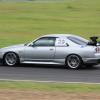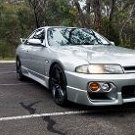Alcon TA6 Calipers on R33 GTST - Flexing
Announcements
-
Similar Content
-
Latest Posts
-
By BuiltNotBought · Posted
Doing a +T on my car and I’ve read the precious forums lots of mixed reviews from sometime back. checking if anyone has any ideas for airbox or enclosed pod filter or solutions? I was thinking stock GTT box but some say it’s restrictive? I seen some people try fit in a pod in the box anyone done that recently? not any good enclosed options ? Thanks -
I think in the modern era we live in, if I were converting a hydro lifter head to solid, particularly when chasing revs, I'd be seeing what I could do to use shimless buckets. Those of us with Neos usually have this persistent niggling fear of a shim getting spat out and ruining everything. Shim-over is...yucky that way. At least the Tomei kit appears to be conventional, but it would still be nice if they'd decided to go shimless.
-
Ok guys thank you very much. GCG highflow it is then 🙂
-
forgot to mention that when it does this it does not kill the engine, but I have not kept the pedal down long enough to let it, as I see no reason to beat up on it as its got to be something simple, small and dumb causing this. And as soon as I let off pedal, the engine returns to its normal super smooth operation and rpms re-stabilize quickly, once below 4k.




Recommended Posts
Create an account or sign in to comment
You need to be a member in order to leave a comment
Create an account
Sign up for a new account in our community. It's easy!
Register a new accountSign in
Already have an account? Sign in here.
Sign In Now